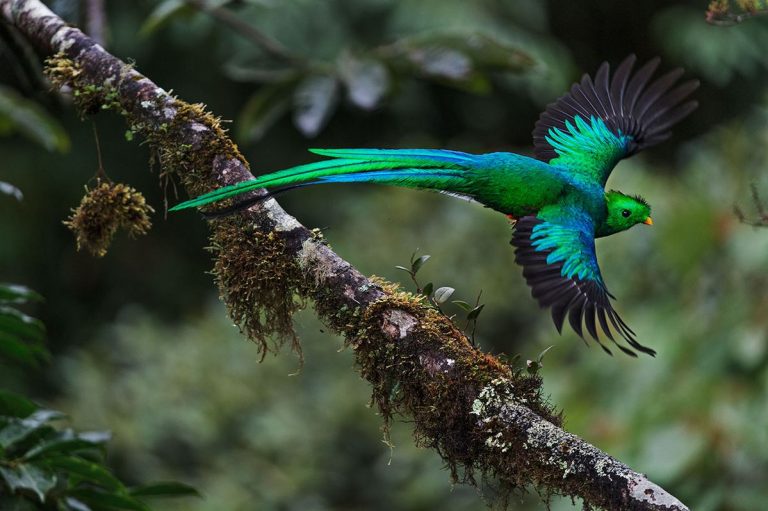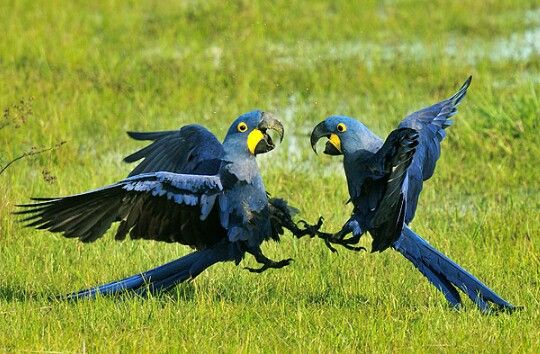The Crowned Giant of the Canopy: The Great Hornbill
High in the steamy forests of Southeast Asia, a shadow sweeps across the canopy. A deep, resonant whoosh-whoosh of wings rolls through the air like the sound of a distant drum. Moments later, a magnificent bird bursts into view, crowned with a golden casque that gleams in the sunlight. This is the Great Hornbill (Buceros bicornis), one of Asia’s most spectacular avian giants and a symbol of the rainforest itself.
A Bird Built for Majesty

The Great Hornbill is impossible to mistake. Reaching over a meter in length with a wingspan nearing five feet, it dominates the treetops with regal presence. Its plumage is striking: a bold contrast of black and white, with a long, sweeping tail tipped in ivory. But its most extraordinary feature is the massive, down-curved yellow bill, topped by a hollow casque shaped like a crown. Males often smear this casque with oils from their preen gland, staining it a rich orange-yellow that glows in the tropical light. Females are slightly smaller, with bluish facial skin instead of the male’s red.
Lords of the Rainforest
These hornbills roam across India, Bhutan, Myanmar, Thailand, and the Malay Peninsula, where they dwell in old-growth evergreen and deciduous forests. They are primarily frugivores, feasting on figs and other fruits, but will also take small mammals, reptiles, and birds when the opportunity arises. Their powerful wingbeats, audible from great distances, are so distinctive that villagers can identify the bird’s approach long before seeing it.
A Remarkable Family Life
The breeding cycle of the Great Hornbill is among the most unusual in the avian world. When a pair mates, the female seals herself into a tree cavity using mud, droppings, and food remains, leaving only a narrow slit. Inside this chamber, she lays her eggs and remains walled in for months, dependent entirely on the male, who tirelessly brings food to sustain her and, later, the chicks. Only when the young are strong enough does the family break free from their wooden fortress. This extraordinary ritual, repeated generation after generation, speaks of both vulnerability and deep trust.
Conservation in a Changing World
Though widespread, the Great Hornbill faces mounting threats. Deforestation, especially the loss of towering old trees suitable for nesting, has severely reduced their numbers in many regions. Hunting for their casques and feathers adds to the pressure. In some parts of their range, populations have declined sharply, prompting conservation efforts that focus on habitat protection and artificial nest-box programs. In Thailand and India, community-led projects now work to safeguard hornbill habitats, recognizing the bird’s vital role as a seed disperser in forest ecosystems.
A Cultural Icon
For Indigenous peoples and forest communities, the Great Hornbill is more than a bird—it is a spiritual symbol of strength, fidelity, and the forest’s vitality. Its casque features in tribal headdresses, dances, and stories, while its image is woven into art and folklore across South and Southeast Asia. To many, the hornbill is a messenger between the earth and the sky, a bridge linking people to the spirit of the forest.

Closing Reflection
To witness a Great Hornbill flying across the jungle is to see a fragment of prehistory alive—a living echo of a wilder world. Its size commands awe, its life story inspires wonder, and its plight reminds us of the fragile balance between humanity and nature. Protecting the Great Hornbill is not just about saving a bird; it is about keeping alive the beating heart of Asia’s forests.






